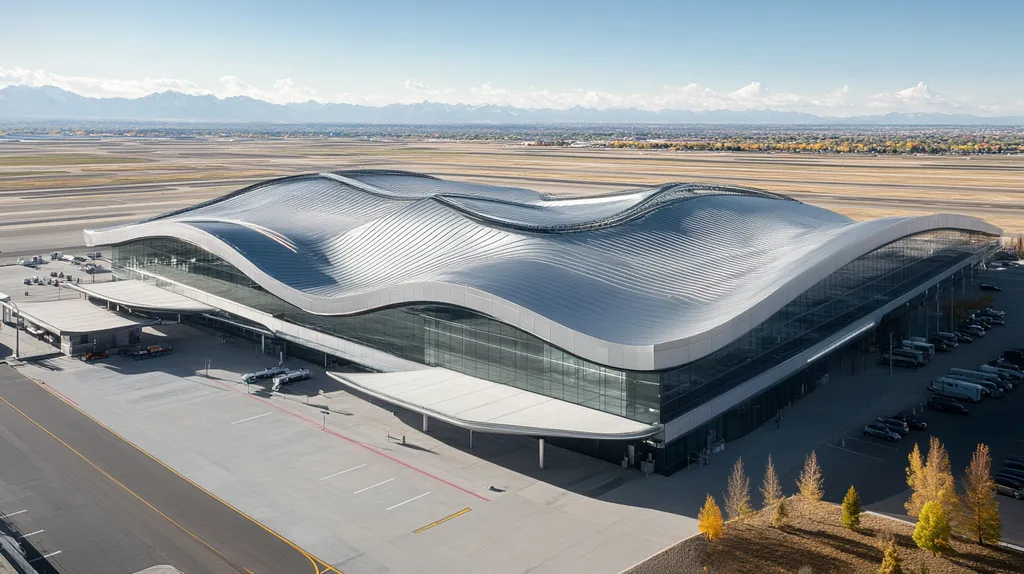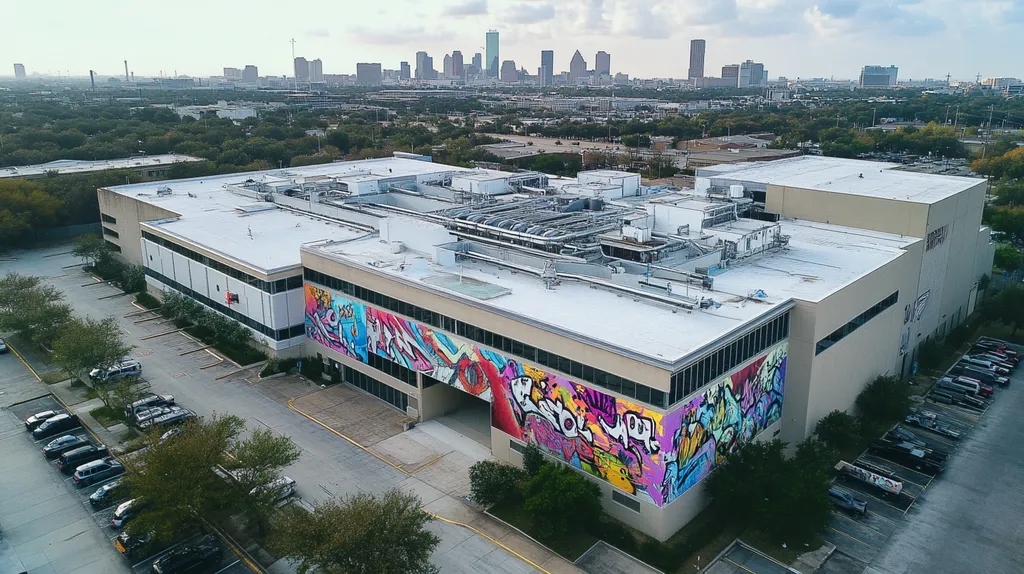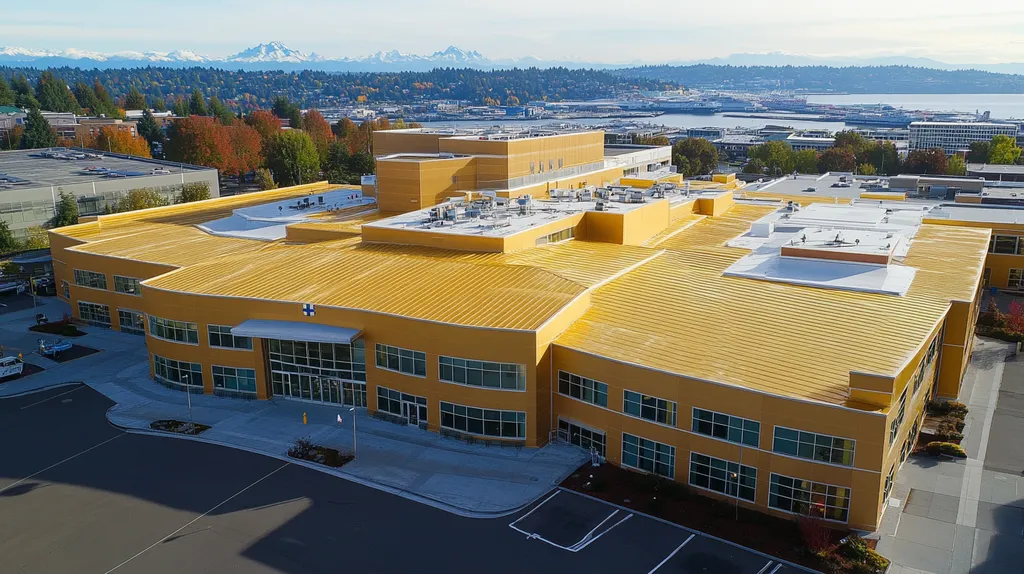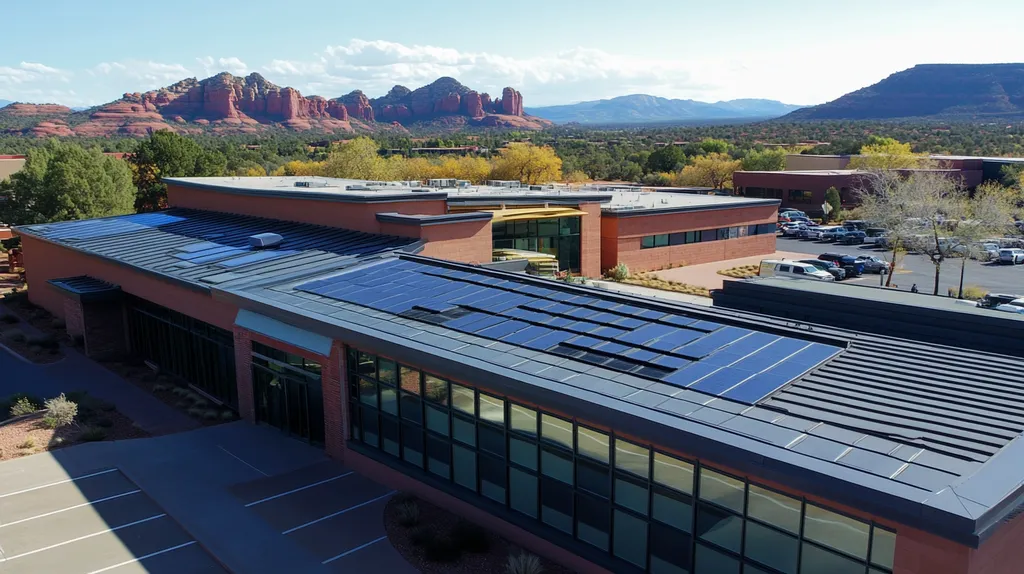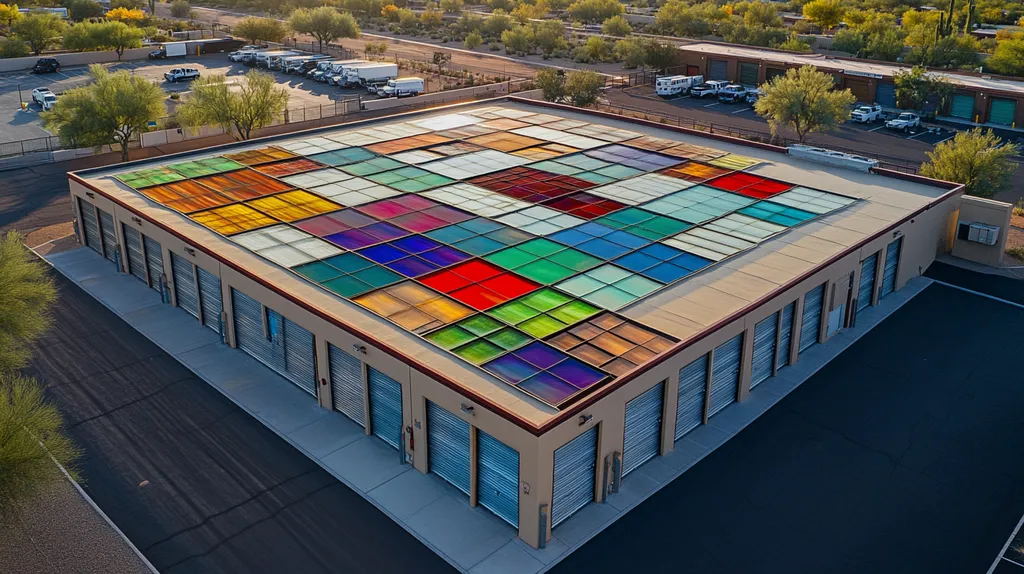Welcome to today’s Battle Royale featuring two roofing heavyweights: “Infrared Thermal Imaging” in the east corner versus “Visual Inspections” in the west!
Tonight’s showdown pits these contenders against each other across six punishing rounds designed to test every aspect of their performance for Commercial Roof Inspection.
At stake? Millions in potential costs, decades of building protection, and the critical performance demands of modern commercial and industrial facilities.
Our professional judging panel will evaluate each round on technical merit, real-world performance, and value delivery. After all six rounds, we’ll declare our ultimate champion.
Ladies and gentlemen, facility managers and building owners… it’s time to rumble!
ROUND 1: INITIAL COSTS & INSTALLATION
When it comes to commercial roof inspections, the financial implications of choosing the wrong method can be staggering. With roof replacements costing anywhere from $10-25 per square foot, missing hidden damage can transform a routine maintenance issue into a major capital expense. Understanding the true costs and complexities of different inspection methods is crucial for making informed decisions that protect both the building and bottom line.
Material Expenses
Initial equipment investments create a significant cost disparity between inspection methods. Infrared thermal imaging requires specialized cameras, moisture meters, and advanced diagnostic tools that can represent a substantial upfront investment.
Many inspections begin with infrared scans to detect concealed moisture that remains invisible during visual assessments. These scans identify temperature discrepancies that signal water infiltration, making them particularly effective during morning or evening temperature transitions. (source: Procore)
Visual inspections demand minimal equipment beyond basic measuring and documentation tools. While this keeps initial costs low, it often leads to incomplete assessments that miss developing problems.
Despite higher upfront costs, infrared imaging’s ability to prevent major failures through early detection gives it a clear ADVANTAGE in long-term value.
Installation Complexity
Professional certification and extensive training requirements make infrared inspection setup more complex. Technicians must understand both the technology and proper scanning techniques to gather accurate data.
The process requires careful planning around weather conditions and building operations. Scans must be properly timed to capture meaningful temperature differentials that indicate problems.
Visual inspections can be performed with minimal preparation by experienced roofers. This simplicity allows for more frequent assessments but sacrifices the precision of advanced diagnostics.
While visual inspections are easier to implement, infrared’s superior diagnostic capabilities earn it an ADVANTAGE in this category.
Project Timeline
Infrared scanning can rapidly assess large roof areas, typically covering 40,000 square feet in under two hours. The technology provides immediate results that allow for quick decision-making.
However, proper setup and ideal scanning conditions require careful scheduling. Rushing the process or scanning during suboptimal conditions can compromise results.
Visual inspections offer flexible scheduling but demand more time for thorough surface examination. The process becomes particularly time-consuming when investigating suspected leaks.
Given its ability to quickly identify problems while maintaining accuracy, infrared imaging claims another ADVANTAGE in timeline efficiency.
ROUND 1 WINNER: Infrared Thermal Imaging
ROUND 2: DURABILITY & LIFESPAN
Commercial roof durability directly impacts both building protection and operational costs. Studies show that premature roof failures cost businesses an average of $1-3 per square foot annually in unnecessary repairs and energy loss. Understanding how inspection methods affect roof longevity is crucial for protecting these substantial investments.
Material Integrity Assessment
The ability to detect early signs of material degradation significantly impacts roof durability. Infrared thermal imaging can identify subsurface issues like delamination, water infiltration, and insulation compression before visible damage occurs.
These scans create detailed thermal maps that reveal temperature variations indicating potential failure points. This data allows facility managers to address problems before they compromise the roofing system’s integrity.
Visual inspections are limited to surface-level evaluations, often missing developing issues within the roof assembly. Even experienced inspectors cannot detect problems hidden beneath the membrane without specialized tools.
Given its ability to identify concealed deterioration, infrared thermal imaging claims a clear ADVANTAGE in material assessment.
Performance Monitoring
Tracking roof performance over time requires consistent, measurable data. Infrared imaging provides quantifiable metrics about moisture levels, insulation effectiveness, and membrane condition that can be compared across inspection cycles.
This scientific approach enables precise tracking of degradation rates and performance trends. Facility managers can use this information to make data-driven decisions about maintenance and replacement timing.
Visual inspections rely heavily on subjective observations that can vary between inspectors. Without standardized measurements, tracking gradual changes becomes challenging.
The quantifiable nature of infrared scanning gives it an ADVANTAGE in performance monitoring.
Lifecycle Planning
Effective lifecycle planning depends on accurate condition assessment data. Infrared technology provides detailed insights into remaining service life by revealing both current issues and developing problems.
This comprehensive view allows for strategic budget allocation and maintenance scheduling. Organizations can optimize their roof asset management by addressing issues before they escalate into major repairs.
Visual inspections often lead to reactive maintenance approaches based on visible damage. This pattern typically results in shortened roof lifespans and higher lifetime costs.
The proactive capabilities of infrared scanning earn it another ADVANTAGE in lifecycle planning.
ROUND 2 WINNER: INFRARED THERMAL IMAGING
ROUND 3: PERFORMANCE FACTORS
Performance factors in commercial roof inspections can mean the difference between catching problems early or facing catastrophic failures. Studies show that undetected roof issues typically expand damage areas by 500% within the first year, dramatically increasing repair costs. For facility managers, choosing the right inspection method directly impacts both maintenance budgets and building protection.
Accuracy in Detection
Core sampling and detailed material analysis reveal that many roofing problems begin deep within the system’s layers. Taking strategic core samples during inspections helps determine material composition and moisture penetration levels that might otherwise go unnoticed. (source: Procore)
Infrared thermal imaging penetrates beyond surface layers to identify hidden moisture, insulation gaps, and structural weaknesses. This technology creates detailed thermal maps that precisely locate problem areas before they manifest as visible damage.
Visual inspections can only assess apparent surface conditions, often missing critical subsurface issues. Even experienced inspectors cannot detect problems masked by intact top layers without specialized tools.
The superior detection capabilities of infrared scanning earn it a clear ADVANTAGE in accuracy.
Time Efficiency
Rapid assessment capabilities significantly impact both inspection costs and building operations. Modern infrared equipment can scan up to 50,000 square feet of roofing per hour while maintaining precise detection accuracy.
The technology allows technicians to quickly identify problem areas and focus detailed investigation where needed. This targeted approach eliminates the need for time-consuming systematic surface examination.
Visual inspections require methodical surface-by-surface examination that becomes increasingly time-intensive as roof size grows. The process demands careful attention to every visible detail, significantly extending inspection duration.
Given its superior scanning speed and precision, infrared imaging claims another ADVANTAGE in efficiency.
Cost-Effectiveness
Long-term cost implications of inspection methods directly affect facility maintenance budgets. While infrared equipment represents a larger initial investment, its ability to prevent major failures through early detection delivers substantial savings.
The technology’s precision helps avoid unnecessary repairs while identifying genuine problems before they escalate. This targeted maintenance approach optimizes repair spending and extends roof lifespan.
Visual inspections carry lower upfront costs but often lead to expensive repairs when hidden problems go undetected. The inability to identify developing issues early typically results in more extensive and costly repairs.
Despite higher initial costs, infrared’s prevention capabilities earn it an ADVANTAGE in cost-effectiveness.
ROUND 3 WINNER: Infrared Thermal Imaging
ROUND 4: MAINTENANCE REQUIREMENTS
Regular maintenance inspections can mean the difference between a roof lasting its full designed lifespan or failing prematurely. Industry data shows that neglected commercial roofs typically require replacement 7-10 years earlier than well-maintained systems, resulting in hundreds of thousands in unnecessary capital expenses. Understanding maintenance requirements for different inspection methods helps facility managers optimize their roof asset management strategy.
Cost of Ongoing Maintenance
Before conducting any type of roof inspection, proper preparation and equipment are essential for accurate results. A comprehensive inspection requires specific tools ranging from basic safety gear to specialized diagnostic equipment. (source: Northface Construction)
Infrared thermal imaging systems require regular calibration and software updates to maintain accuracy. However, these maintenance costs are offset by the technology’s ability to prevent major failures through early detection.
Visual inspection tools need minimal maintenance but must be replaced more frequently due to wear and exposure. The lower equipment maintenance costs are counterbalanced by increased labor expenses from more frequent inspections.
While both methods require ongoing investment, infrared’s superior prevention capabilities earn it an ADVANTAGE in maintenance cost efficiency.
Ease of Scheduling and Frequency
Effective maintenance programs require consistent inspection scheduling to track roof condition over time. Infrared scans must be conducted under specific environmental conditions to ensure accurate readings.
These scheduling constraints are balanced by the comprehensiveness of each scan. A single thorough infrared inspection can provide more actionable data than multiple visual assessments.
Visual inspections offer greater scheduling flexibility but require more frequent implementation to maintain effectiveness. The increased frequency creates additional coordination challenges with building operations.
Despite timing restrictions, infrared’s superior diagnostic capabilities earn it an ADVANTAGE in scheduling efficiency.
Long-term Performance Tracking
Monitoring roof performance over time requires consistent, measurable data points. Infrared imaging creates detailed thermal maps that can be compared across inspection cycles to track degradation patterns.
This scientific approach enables precise documentation of changes in moisture levels, insulation effectiveness, and membrane condition. Facility managers can use this data to make informed decisions about maintenance timing.
Visual inspections lack standardized measurement capabilities, making it difficult to track subtle changes between assessments. Without quantifiable metrics, tracking gradual deterioration becomes highly subjective.
The superior data collection capabilities of infrared scanning earn it another ADVANTAGE in performance tracking.
ROUND 4 WINNER: Infrared Thermal Imaging
ROUND 5: SUSTAINABILITY CREDENTIALS
Environmental impact and energy efficiency have become critical factors in commercial roofing decisions. With buildings accounting for nearly 40% of global energy consumption, the inspection method chosen can significantly affect both sustainability goals and operating costs. Understanding how different inspection approaches impact environmental performance helps facility managers make decisions that align with both ecological and financial objectives.
Impact on Lifespan and Material Efficiency
Effective roof inspections play a crucial role in extending system longevity and reducing material waste. Infrared thermal imaging identifies developing issues before they compromise the roofing system, allowing targeted repairs that preserve existing materials.
The technology’s ability to detect subsurface moisture and degradation helps prevent premature roof failure. This capability significantly reduces the frequency of major repairs and full replacements that generate substantial material waste.
Visual inspections cannot detect hidden deterioration until surface damage appears. This limitation often results in extensive repairs or premature replacements that could have been prevented with earlier intervention.
Infrared’s superior ability to preserve existing materials earns it a clear ADVANTAGE in sustainability impact.
Energy Efficiency and Utility Costs
Energy conservation directly impacts both environmental footprint and operational expenses. Infrared scanning precisely identifies areas of heat loss and moisture infiltration that compromise building envelope performance.
These detailed thermal maps enable facility managers to address specific deficiencies that waste energy. By targeting repairs to actual problem areas, buildings maintain optimal energy efficiency.
Visual inspections frequently miss thermal bridges and insulation gaps that drive up energy consumption. Without the ability to detect these hidden issues, buildings continue operating inefficiently.
The precision of infrared in identifying energy waste gives it another ADVANTAGE in efficiency optimization.
Material Recyclability and Future Proofing
Sustainable roof management requires careful tracking of material condition to optimize recycling potential. Infrared imaging provides detailed data about membrane and insulation degradation that helps plan material recovery.
This information allows facility managers to schedule replacements when materials retain maximum recycling value. The technology also helps verify the performance of new sustainable materials and systems.
Visual assessments offer limited insight into material condition below the surface. This makes it difficult to determine optimal timing for recycling and replacement with sustainable alternatives.
Infrared’s superior material analysis capabilities earn it an ADVANTAGE in recycling optimization.
ROUND 5 WINNER: Infrared Thermal Imaging
ROUND 6: SPECIALIZED APPLICATIONS
Specialized commercial roofing applications demand precise inspection methods to prevent catastrophic failures. Studies indicate that specialized roof systems fail 3x more frequently when relying solely on traditional inspection methods, resulting in millions in damage annually. For facilities with critical operations, choosing the right inspection approach can mean the difference between continuous operations and costly shutdowns.
Complex System Analysis
Modern commercial roofs often incorporate multiple integrated systems including solar arrays, green roof components, and specialized drainage solutions. Core sampling and detailed analysis reveal that these complex assemblies require thorough subsurface evaluation to maintain proper function. (source: West Roofing Systems)
Infrared thermal imaging can map the entire roofing assembly’s performance, identifying issues within and between integrated systems. This comprehensive view helps prevent compatibility issues and system conflicts that could compromise roof integrity.
Visual inspections struggle to evaluate interactions between different roof systems and components. Surface-level assessment cannot detect problems developing at system interfaces or beneath specialized installations.
Given its superior capability to analyze complex assemblies, infrared thermal imaging claims a clear ADVANTAGE in this category.
Performance Verification
Specialized roofing applications require regular verification that all components maintain optimal performance. Infrared scanning provides quantifiable data about system function, enabling precise tracking of performance metrics.
This technology can identify subtle changes in thermal patterns that indicate developing problems within specialized systems. Early detection allows for targeted maintenance before issues affect overall roof performance.
Visual inspections provide limited ability to verify specialized system performance beyond obvious surface conditions. Without detailed thermal data, gradual deterioration often goes unnoticed until significant damage occurs.
The precision and reliability of infrared scanning earn it another ADVANTAGE in performance verification.
Integration Assessment
Successful specialized applications depend on proper integration between various roofing components. Infrared imaging reveals how different systems interact thermally, identifying potential conflict points before they cause failures.
The technology’s ability to detect temperature variations helps ensure that specialized installations maintain proper separation and function. This capability is particularly valuable for roofs with multiple integrated systems.
Visual inspection methods cannot effectively evaluate system integration below the surface. This limitation often leads to missed opportunities for preventive maintenance at critical connection points.
Infrared’s superior integration analysis capabilities earn it a final ADVANTAGE in this category.
ROUND 6 WINNER: Infrared Thermal Imaging
AND THE WINNER IS…
After six grueling rounds of technical evaluation, we have our verdict. In a stunning unanimous decision, Infrared Thermal Imaging has dominated this matchup with a clean sweep across all categories!
This heavyweight champion demonstrated superior detection capabilities, unmatched efficiency, and game-changing preventive power. From initial costs through specialized applications, infrared scanning’s ability to identify hidden problems before they become catastrophic failures proved decisive in every round.
But don’t count Visual Inspections out completely! For smaller facilities with simple roof systems and limited budgets, traditional visual assessments still offer a viable inspection strategy. When combined with regular maintenance, visual inspections remain a reliable cornerstone of basic roof management.
However, every building faces unique challenges based on local climate, structural design, and operational demands. While this analysis provides general guidance, specific property characteristics can significantly impact inspection requirements. Building owners and facility managers should always consult qualified roofing professionals who can evaluate their particular situation.
Ladies and gentlemen, in the high-stakes arena of commercial roof protection, remember: The true victory comes not just from choosing the right inspection method, but from implementing it with precision and purpose. Choose your champion wisely!
FREQUENTLY ASKED QUESTIONS
Q. What are the initial costs for commercial roof inspections?
A. Initial costs vary significantly between inspection methods. Infrared thermal imaging requires specialized cameras and advanced tools, resulting in higher upfront investments. While visual inspections have lower immediate costs, they can miss problems leading to expensive repairs later, making it critical to understand long-term financial implications.
Q. How does inspection method affect the durability of a commercial roof?
A. The durability of a commercial roof is significantly impacted by the detection capabilities of the inspection method. Infrared thermal imaging can identify hidden moisture and material degradation before visible damage occurs. In contrast, visual inspections often miss these issues, potentially leading to premature roof failure and increased repair costs.
Q. Which inspection method is more accurate for commercial roofs?
A. Infrared thermal imaging offers superior accuracy in identifying hidden moisture and structural issues. It creates detailed thermal maps that highlight problem areas before they manifest, whereas visual inspections are limited to surface evaluations, often overlooking critical subsurface conditions.
Q. How does maintenance frequency differ between inspection methods?
A. Infrared thermal imaging requires more careful scheduling and environmental conditions for effective results, potentially leading to less frequent but more thorough assessments. Visual inspections can be done more regularly but often need to be performed more frequently to catch emerging issues, resulting in greater coordination challenges with ongoing building operations.
Q. What is the effect of inspection methods on sustainability for commercial roofs?
A. Sustainable roof management benefits significantly from effective inspection methods. Infrared thermal imaging helps identify material degradation and inefficiencies early, reducing waste and extending the roof’s lifespan. In contrast, visual inspections typically fail to catch these issues, potentially leading to greater material waste and increased environmental impact due to premature replacements.
Q. How does the choice of inspection method impact cost-effectiveness?
A. The choice between inspection methods can greatly influence long-term costs. Infrared thermal imaging, while requiring a higher initial investment, often prevents costly failures through early detection. Visual inspections, although cheaper upfront, typically result in higher overall expenses due to missed issues and the need for extensive repairs.
Q. Can infrared thermal imaging be used for specialized commercial roofing applications?
A. Yes, infrared thermal imaging is particularly effective for specialized roofing applications. It can analyze complex systems and interactions between components, ensuring proper function. This level of analysis is crucial in preventing failures and prolonging the life of specialized roofs, which often involve significant investment and operational importance.


